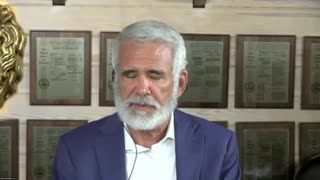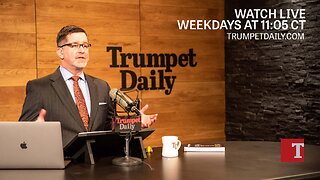Premium Only Content

Cincinnati Frontier: The Early History and Convention of States
Our mental images of the American frontier are formed by stories, television shows, and movies more than by actual history. But there was much more to it than what innumerable Hollywood productions show. We do not have to go farther west to look at the history of the frontier; when Cincinnati was founded it was the frontier.
We have more than enough history for a television mini-series – plenty of wilderness; lots of Indians; one-sided treaties; an army with a couple very bad commanders and resounding military defeats; an army then reformed into the Legion of the United States with a competent commander and a major victory; a traitor; intrigues by the British, French, and Spanish; a judge who sold thousands of acres of land with fraudulent titles, settlers; and the very first congressional inquiry of the executive branch.
When the United States and Great Britain ended the Revolutionary War in 1783 with the Treaty of Paris, Britain agreed that the western boundary of the United States shall be the Mississippi River. A huge area west and north of the Ohio River, soon to be called the Northwest Territory, would allow incredible room for expansion. But most of the land west of the Appalachian Mountains had been reserved to the Indians by the Royal Proclamation of 1763, and even though subsequent treaties quickly reduced the extent, the northwest area was still theirs. And no Indian tribe had signed the Treaty of Paris.
The chiefs of a few tribes signed treaties in the next several years in which they agreed to move and yield the lands in southern Ohio area to the United States. Join Engineer and local Cincinnatian Michael Patton who will walk us through Cincinnati Frontier Treason, Fraud, and the Indian Wars in the Early Settlement
The Convention of States will present an overview of the process for a minimum of 34 State Legislatures to make applications for a Convention of States. The purpose of holding a convention is for the purpose of suggesting proposed amendments to the US Constitution in 3 limited areas: term limits for Federal officials, imposing fiscal restraints on Federal spending & taxation, and limiting power, scope, and jurisdiction of the Federal government. Just like any amendments proposed by Congress, it still takes 3/4ths or 38 states to ratify any proposed amendments before they would become effective. He will share where the project stands currently in Ohio and in the other states active in this movement.
-
 1:15:08
1:15:08
EmpowerUAmerica
2 months agoDanger of COVID mRNA Vaccines with Dr. Robert Malone and Stephanie DeGaray
619 -
 LIVE
LIVE
The Mel K Show
56 minutes agoMORNINGS WITH MEL K - American Apathy Increases as Global Technocracy Looms 8-7-25
461 watching -
 LIVE
LIVE
The Shannon Joy Show
43 minutes ago🔥🔥Is It Time To Get Bitchy For Liberty?? MAHA Betrayals Spark Outrage! Live Exclusive With Naomi Wolf & Sasha Latypova 🔥🔥
156 watching -
 LIVE
LIVE
Trumpet Daily
37 minutes agoTrumpet Daily LIVE | Aug. 7, 2025
368 watching -
 LIVE
LIVE
Tudor Dixon
1 hour agoFaith, Freedom, and the Future of Universities with Robert P. George | The Tudor Dixon Podcast
41 watching -

Rethinking the Dollar
37 minutes agoThursday Morning Check-In: Let's Talk...
-
 LIVE
LIVE
GloryJean
1 hour agoBattlefield 6 Beta is HERE!!! Let's See The Hype 🔥
75 watching -
 LIVE
LIVE
LFA TV
16 hours agoLFA TV ALL DAY STREAM - THURSDAY 8/7/25
3,889 watching -
 3:01:05
3:01:05
JuicyJohns
3 hours ago🟢#1 REBIRTH PLAYER 10.2+ KD🟢$500 GIVEAWAY SATURDAY!
38.7K -

The Big Mig™
3 hours agoJames Clappers Fresh Squeezed Bullshit
3.5K14